In the 1920s, Mollie Burkhart narrowly avoided becoming a victim of the Osage Murders in Oklahoma — which her own husband Ernest participated in.
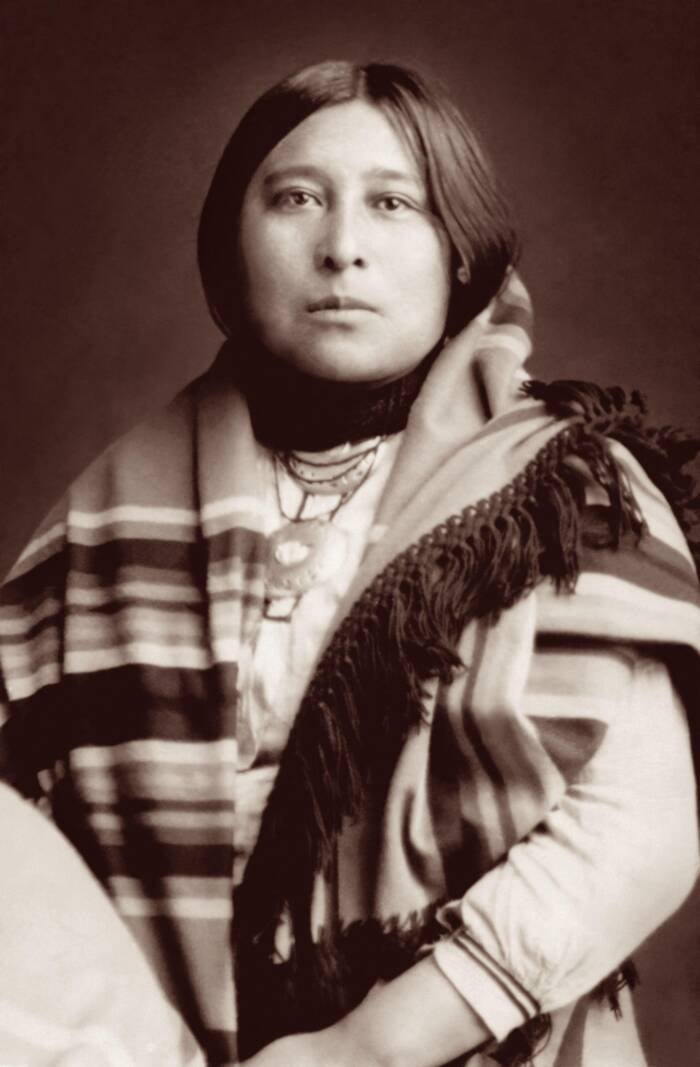
Alpha Historica/Alamy Stock PhotoMollie Burkhart’s family suffered greatly during the Osage Murders, as portrayed in Killers of the Flower Moon.
In the 1920s, Mollie Burkhart’s family seemed to have an especially horrific run of bad luck. In a matter of months in 1921, her sister, cousin, and mother all died under sinister circumstances. And then, Mollie herself started to feel strangely ill. Their family’s misfortune was not a coincidence, but part of the Osage Indian Murders — which were recently depicted in the 2023 Martin Scorsese movie Killers of the Flower Moon.
Far from random, the Osage Indian Murders were a concerted effort by Mollie’s husband’s uncle to steal the profits that her family made from oil on their land in Oklahoma. He and other powerful local men were willing to go to great lengths to take the Osage Native Americans’ wealth, and dozens of innocent people would be killed by the time the murders ended.
So who was Mollie Burkhart? And what happened to her in real life?
Though the film hems close to the truth, it does leave out some parts of Burkhart’s life. This is the full story of Mollie Burkhart, from her doomed marriage to Ernest Burkhart to her life after the Osage Murders.
Mollie Burkhart And The Osage Oil Headrights
Born on December 1, 1886, as Wah-kon-tah-he-um-pah (later Mollie Kyle), Mollie Burkhart grew up on the Osage Indian Reservation in Oklahoma. Like other Indigenous tribes, the Osage had been forced out of their native land in Kansas by white settlers. But unlike most other tribes, the Osage happened to settle on the oil-rich lands of the Osage Hills.
And, in the Osage Allotment Act of 1906, they ensured they had the right to own any “subsurface minerals” found on their land. As such, Osage tribal members who owned oil-rich land were awarded a “headright” to the profits.
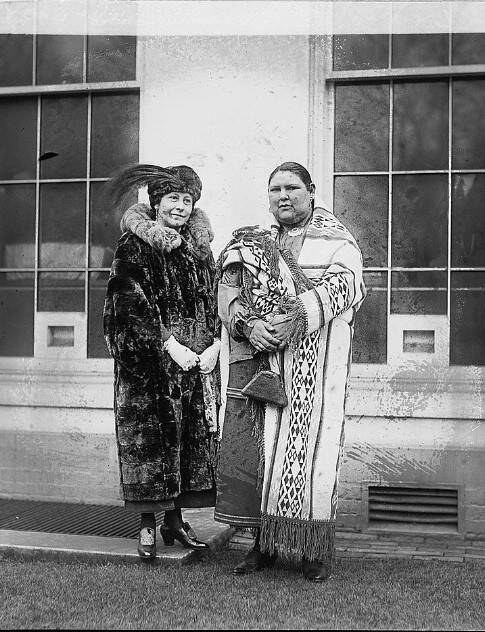
Library of CongressA pair of Osage women. The tribe’s oil headrights made many members very wealthy.
Though these headrights were hereditary, Osage people didn’t have free reign with the profits: The U.S. government assigned white guardians who often withheld or even stole money. Still, many Osage people became millionaires.
Mollie Burkhart’s family was also very well off. Mollie attended Catholic school, learned English, and could afford small luxuries like hiring a driver. In fact, that’s how Mollie met her white husband, Ernest Burkhart.
But Ernest was not what he seemed to be.
He was the nephew of William King Hale, a greedy local man who orchestrated the Osage Indian Murders to get to their headrights. Hale encouraged Ernest’s romance with Mollie, and the two were married in 1917. They had three children together, one of whom died during childhood.
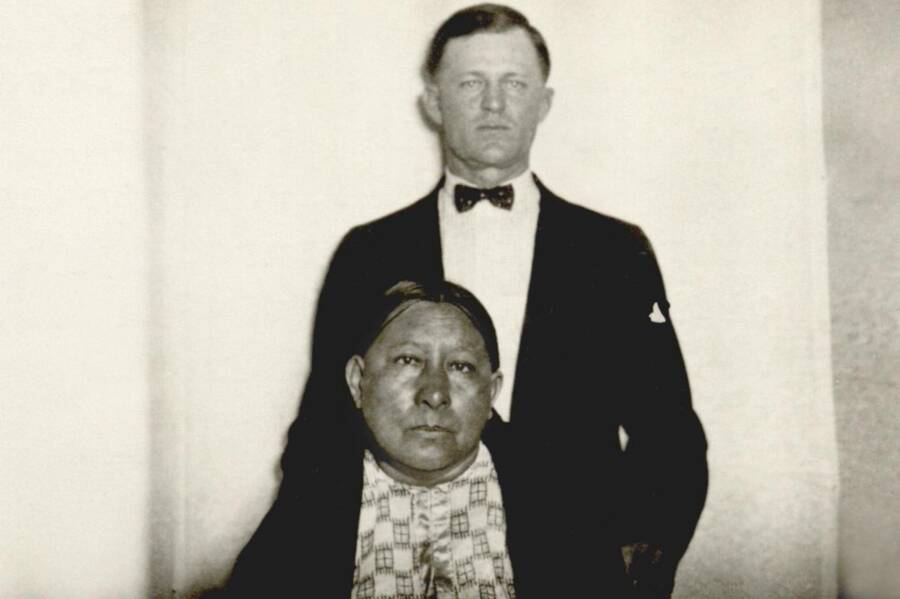
Public DomainErnest and Mollie Burkhart.
And a few years after their marriage, the Osage Indian Murders began.
How The Osage Indian Murders Seemed To Center Around One Woman
Not long after Mollie Burkhart’s wedding, her family members started to die.
In 1918, her sister Minnie died of a mysterious “wasting illness.” In 1921, another one of her sisters, Anna Brown, was found shot to death in a ravine. Mollie’s cousin Charles Whitehorn was also killed that same year, as was her mother, Lizzie Q. Kyle. Another cousin, Henry Roan, was killed in 1923, as was another one of Mollie’s sisters, Rita Smith, who died alongside her husband and their housekeeper when their house was bombed.
In the early 1920s, over two dozen members of the Osage tribe were shot, stabbed, beaten, and bombed during the so-called “Reign of Terror.” And including the people who died under mysterious circumstances, the Osage Indian Murders included over 60 victims total. All of them had connections to the Osage headrights. And Mollie Burkhart feared she’d be next.
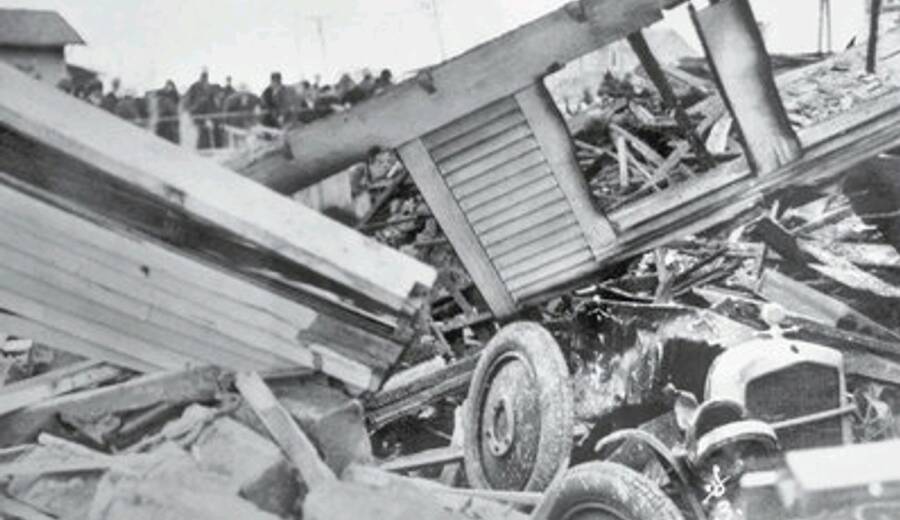
Public DomainThe Smith residence after it was bombed, killing Rita Smith, her husband Bill, and their housekeeper.
According to Killers of the Flower Moon by David Grann (which later inspired the 2023 movie), Mollie told her priest that she feared her life was in danger. The Office of Indian Affairs also began to suspect that Mollie, a diabetic, was being poisoned by “injections of what was supposed to be insulin.”
Mollie and other Osage people used their wealth to hire private detectives, but no one seemed able to figure out what was going on. In fact, a few white men who tried to help the tribe ended up dead themselves. A white friend of the Osage tribe named Barney McBride was fatally stabbed in 1922 after he traveled to Washington, D.C. to seek help, and another tribal ally named W. W. Vaughan died in 1923 after he was apparently thrown from a train.
What’s more, the evidence Vaughan had collected had vanished.
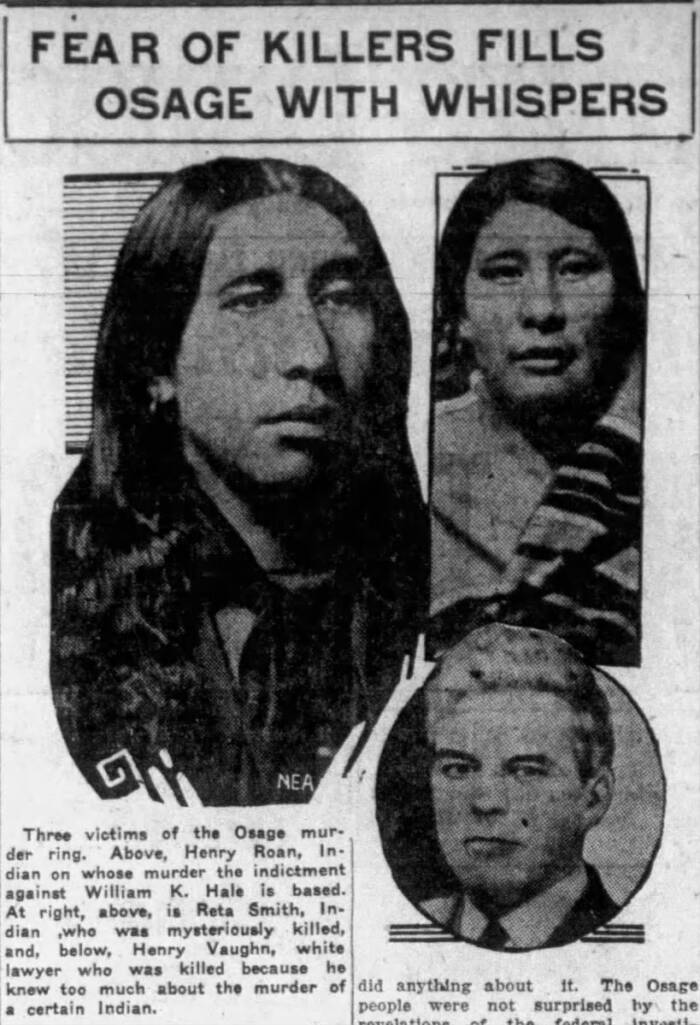
Public DomainNewspaper coverage of the Osage Indian Murders, showing photos of the victims Henry Roan, Rita Smith, and a man identified as “Henry Vaughn” (likely W. W. Vaughan).
In 1925, the Bureau of Investigation (the precursor to the Federal Bureau of Investigation) finally got involved. They sent special agent Tom White to Oklahoma to investigate the murders, and White’s investigation quickly began to focus on Ernest Burkhart and William King Hale.
By following the money, the investigators realized that the headrights of many of the victims had passed on to Mollie Burkhart and her husband. And if Mollie died, the money would then go to her husband, Ernest.
With investigators drawing closer to the truth, Ernest decided to confess. Ultimately, Ernest, Hale, and two others were convicted for their involvement in the Osage Indian Murders and sentenced to life in prison. However, Ernest and Hale were later paroled (and one man’s conviction was overturned as he was promised immunity for testifying for the prosecution).
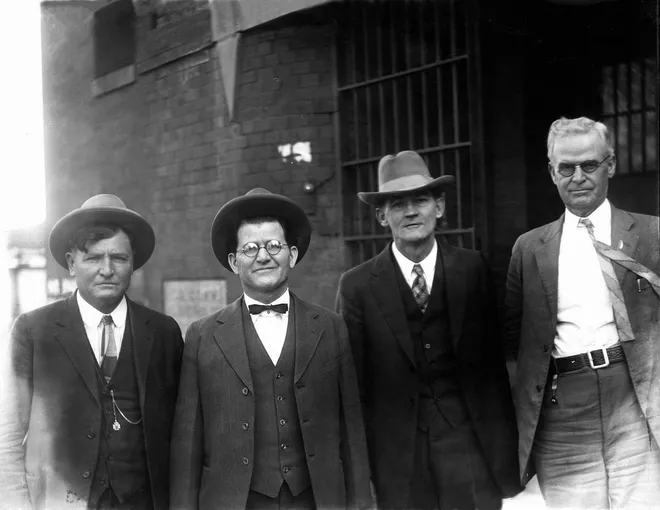
Public DomainWilliam Hale and John Ramsey (the two men in the center of the frame) were both found guilty of involvement in the Osage Indian Murders. Hale purportedly said: “If that damn Ernest had kept his mouth shut, we’d be rich today.”
So what happened to Mollie Burkhart?
Mollie Burkhart After The Osage Indian Murders
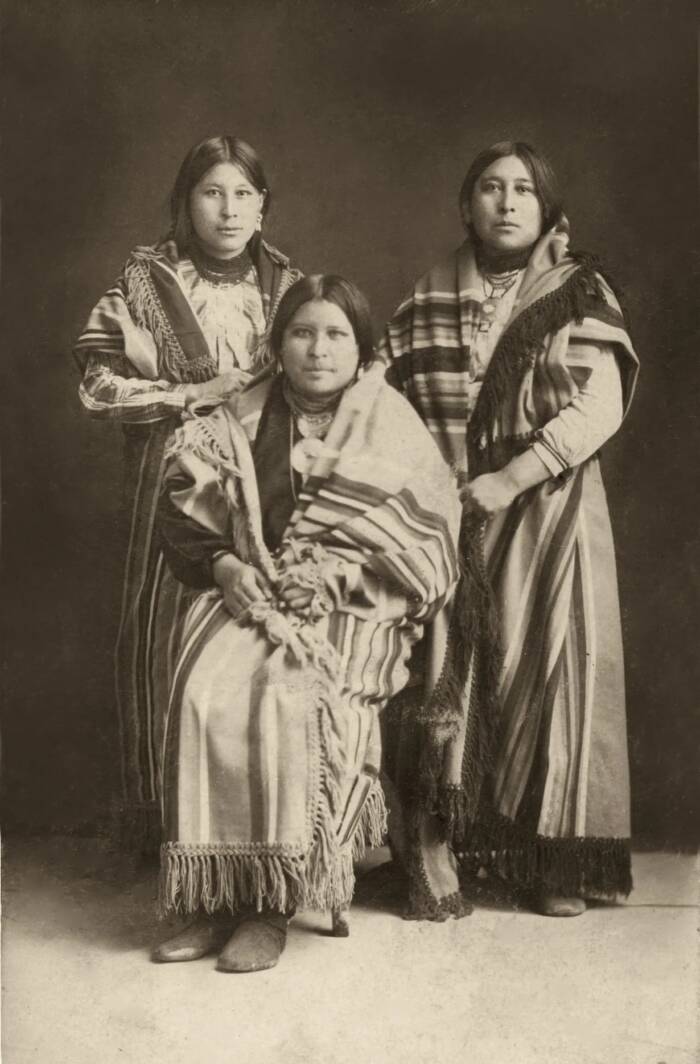
Osage NationMollie (right) with her sisters Anna (center) and Minnie (left), both of whom died during the Osage Indian Murders.
After Ernest Burkhart confessed to his role in the Osage Indian Murders, Mollie Burkhart divorced him. That said, it’s still unclear if Ernest played a direct role in Mollie’s poisoning. Though he gave her a whiskey laced with poison, he may not have known what was in it (Grann suggested that Hale thought his nephew was too “weak-willed” to murder his own wife). And Mollie and Ernest’s granddaughter, Margie, stated that she believed that her grandparents loved each other in spite of everything.
“They couldn’t understand why she loved Ernest and Ernest loved her, and they couldn’t understand that relationship,” Margie Burkhart remarked to PEOPLE in 2023. “I guess nobody can.”
But once Mollie Burkhart divorced her husband, she didn’t look back. Whenever her husband was mentioned after that, Grann wrote, Mollie “recoiled in horror” — and she never spoke his name again.
She remarried a man named John Cobb in 1928 and was eventually restored to “competency,” which meant that she could control her own money without an appointed guardian. Mollie Burkhart’s fortune eventually passed on to the children she’d had with Ernest, but — as time passed — the Osage headrights became less valuable. The Great Depression took its toll, as did the steady shrinking of the oil industry in the region.
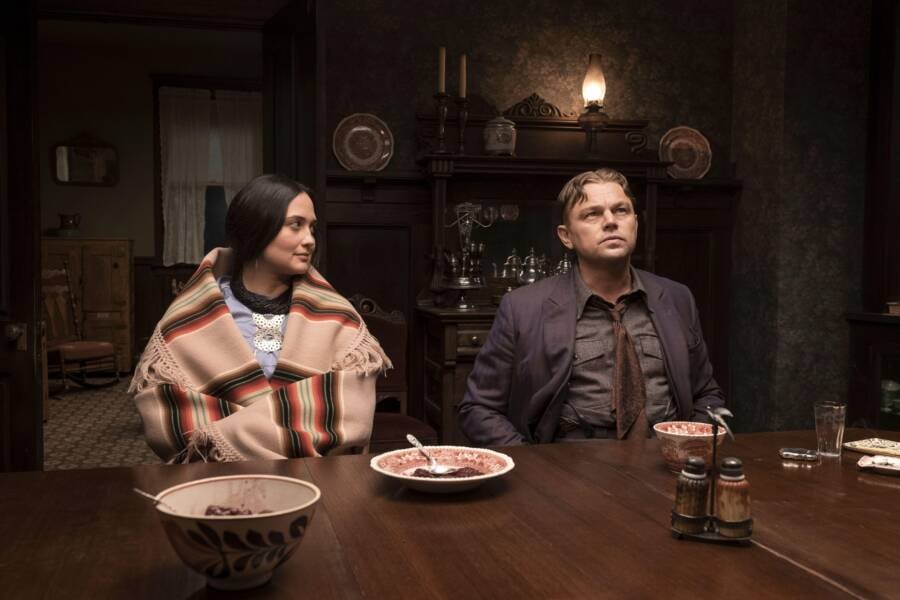
BFA/Alamy Stock PhotoLeonardo DiCaprio as Ernest Burkhart and Lily Gladstone as Mollie Burkhart in Killers of the Flower Moon.
By the time Mollie Burkhart died in 1937 at the age of 50, she’d lived a life of incredible contrasts. She’d been born in a wigwam (a lodge), but grew up to live in a mansion. She started her life speaking only Osage, but became fluent in English. She experienced great love, but also terrible tragedy, heartbreak, loss — and an almost unthinkable betrayal.
After reading about Mollie Burkhart and the Osage Indian Murders, look through this collection of fascinating 20th-century photos of Native Americans taken by Edward Curtis. Or, discover the inspirational stories of powerful Native American women who changed history.





